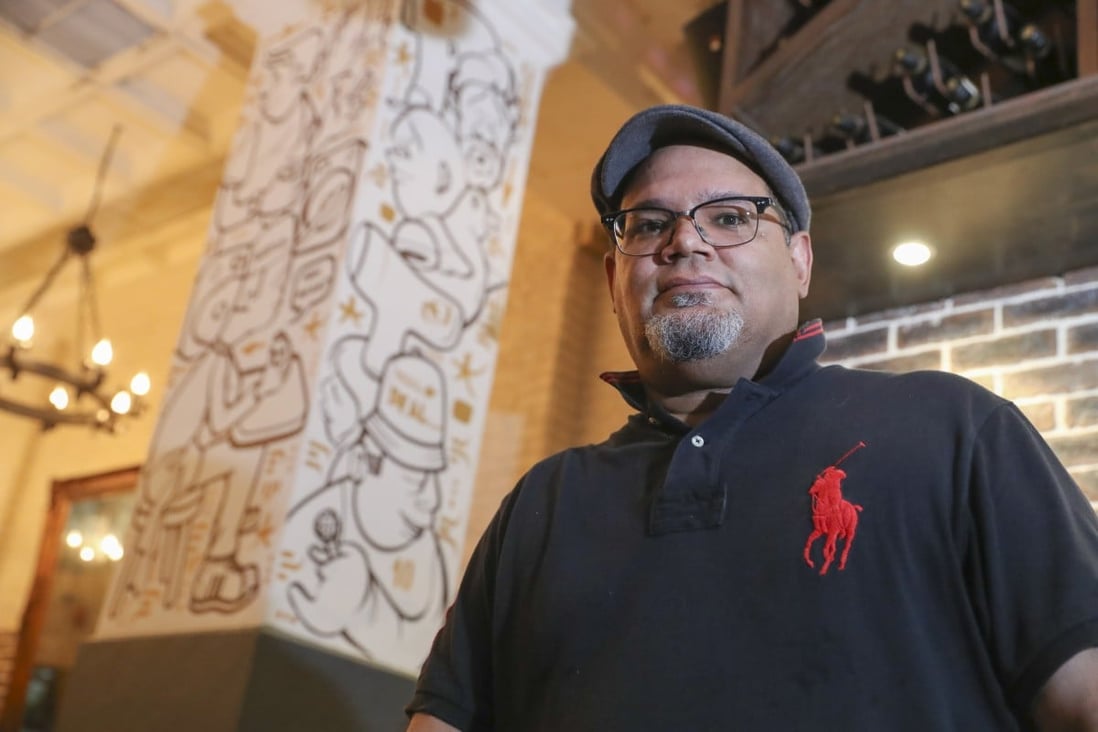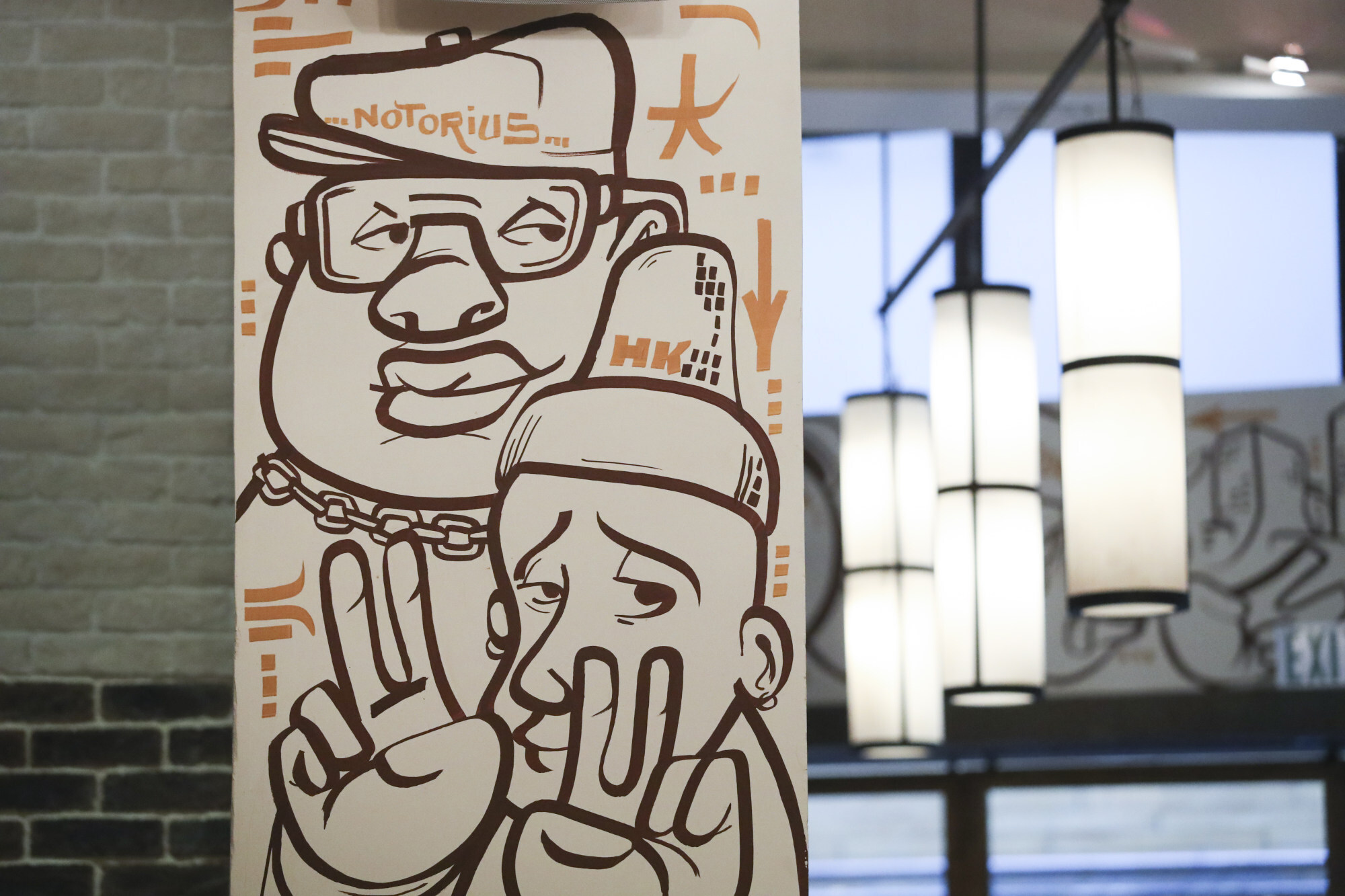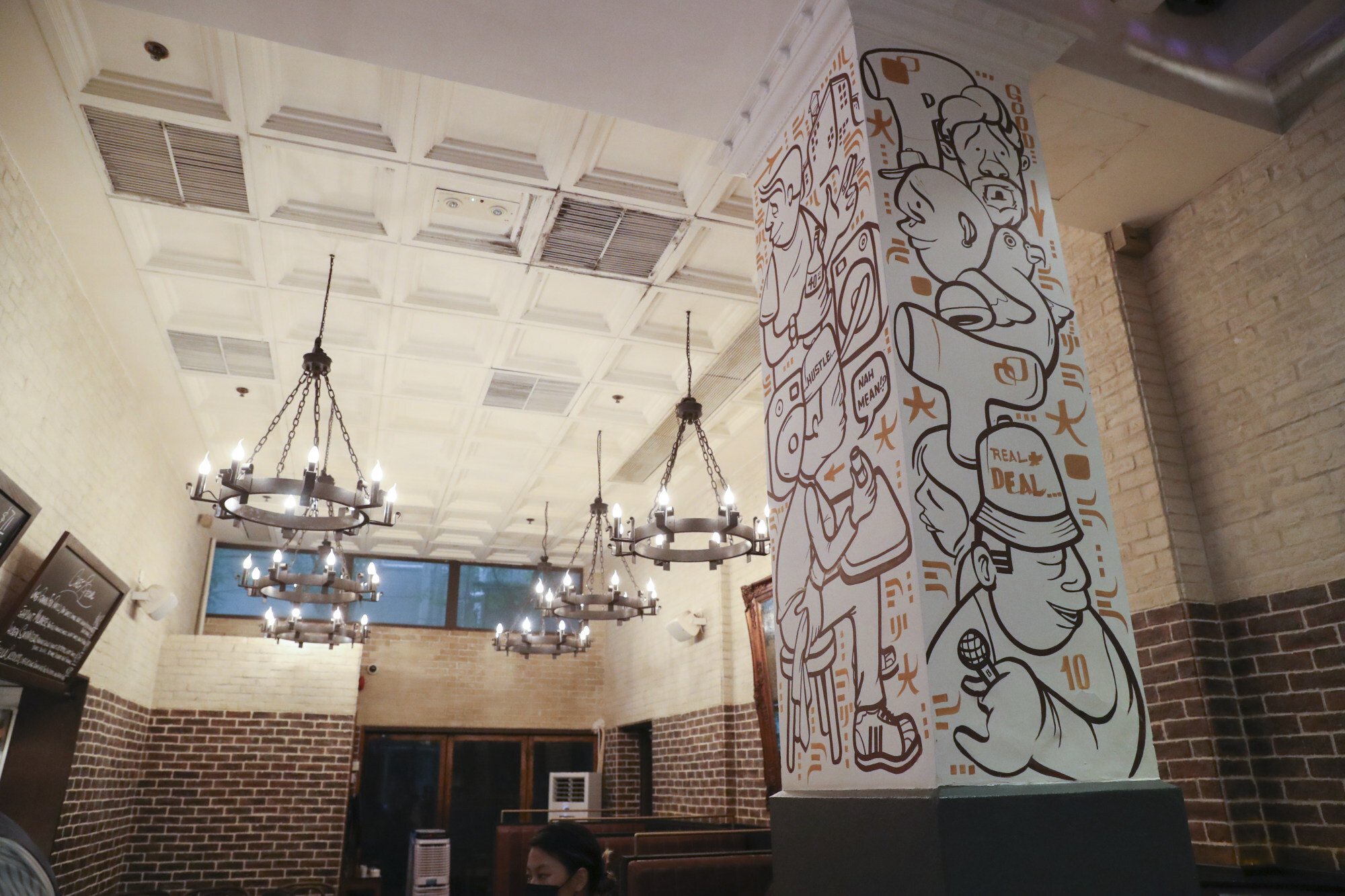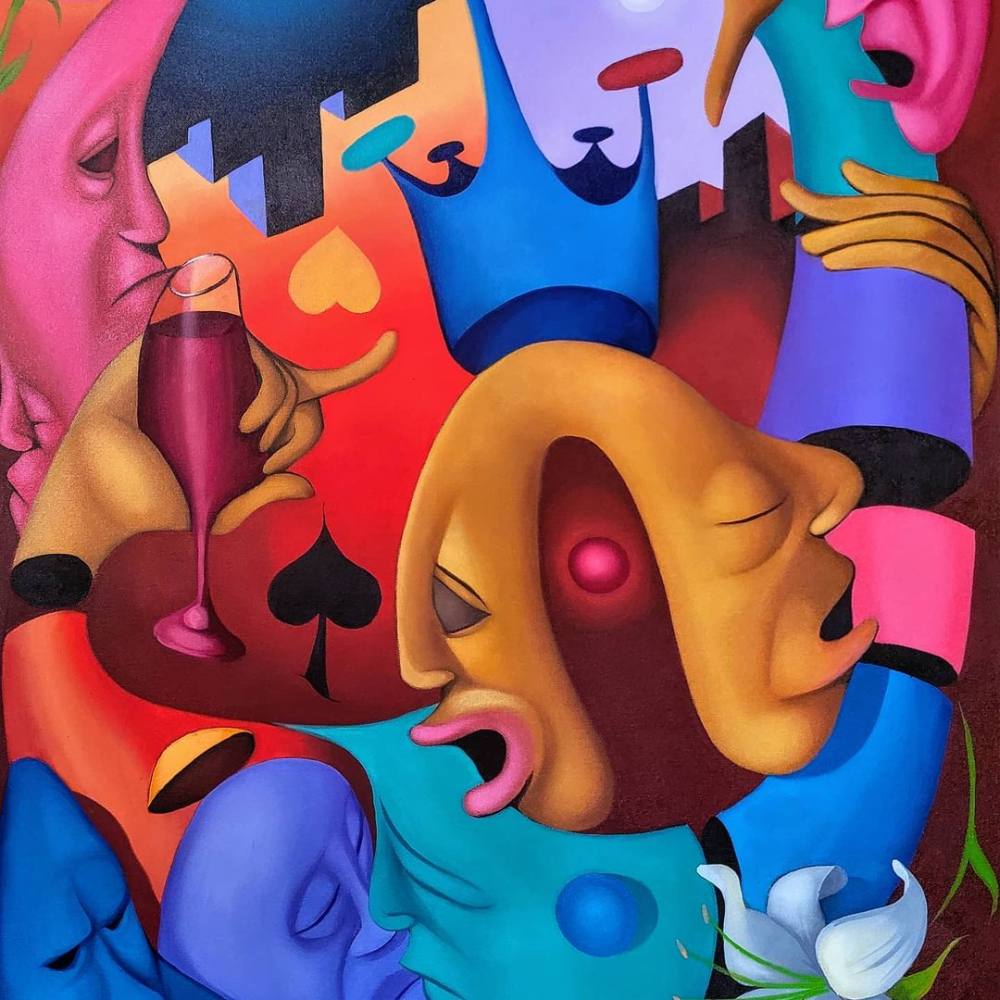Stern Rockwell knew from an early age that he wanted to be an artist, and started doing graffiti in Brooklyn, New York when he was 11, he tells Kate Whitehead
A spell in fashion design, for Cartier and Christian Dior among others, led him to Hong Kong, where’s he returned to street art and found his own pace
Kate Whitehead
28 Aug, 2021
SCMP

Stern Rockwell talks about racism at school, getting into graffiti and how he’s now found his own pace. Photo: SCMP/Edmond So
Brooklyn baby I was born in Brooklyn in 1968. My father was a foreman for the New York City Housing Authority and my mother was a stay-at-home mum.
We lived in Brooklyn Heights, across the street from the promenade. You could smell the salt water coming off the Hudson and we had a great view of Brooklyn Bridge and New York City.
The area was just starting to become gentrified and there were a lot of artists and creatives living in the building. One of my babysitters was an established artist in Mexico and my uncle was also an artist and encouraged me to draw. I knew from age five I wanted to be an artist.
My brother is older by a year. He is light-skinned, like my mum, and I came out dark-skinned, like my grandmother on my mother’s side. My brother was also creative, but he went down a more cerebral path with maths, science and electronics.

Rockwell’s graffiti at Posto Pubblico restaurant in Central, Hong Kong. Photo: Edmond So
Bad boys The New York subways in the 1970s ran trains from the ’30s, with wicker chairs and round windows. I remember asking my mum about the black scrawl on the trains. There was a graffiti crew called The Bad Boys and there would be panel after panel of “TBB”.
In 1975, our rent was raised from US$60 to US$80 a month. My dad decided we should move. He was a Vietnam vet, although he didn’t talk much about that, and he got a GI loan to buy a house in Park Slope, which at the time was a predominantly Puerto Rican neighbourhood and also had a lot of Italian and Polish immigrants. We went from an area that was being gentrified to basically a slum.
Crime in New York at that time was bad and people walked around with their nose in the Bible because it was like Armageddon – lawlessness, crooked cops.
In Park Slope, there was graffiti everywhere and I started hanging out with the local kids and found out who was doing it and how to do it. I started doing graffiti when I was 11.
I was writing Stern – it means “star” in German; my father is part German. I used to do it in the hallways of the junior high school. There was a layover where the trains were parked overnight in winter to keep them warm and they showed me how to get in there. We painted using spray cans, markers and shoe dye. It’s about leaving a mark, but there’s a style to it. You don’t space your letters, it has to be a specific angle and style.

A subway car marked with extensive graffiti in New York, 1973. Photo: Getty Images
Uphill fight In high school, the students were from all over south Brooklyn and there were fights and knifings. Kids would get robbed in school – they’d steal your sneakers or jacket at knifepoint or gunpoint.
In the education system, they absolutely had classes for the coloureds and the whites – although they wouldn’t come out and say it. I couldn’t be in the same class my brother was in and my life in the school system was completely different to his. We used to fight a lot. He did well at school and the teachers were constantly telling me to be like my brother.
It got to me after a while. They didn’t like me answering them back and it became personal. If I answered the teachers back in high school, I’d get sent out of class and roam the corridors. Sometimes I got picked up and sent to the dean’s office.

Art by Rockwell on a building in Causeway Bay, Hong Kong. Photo: Instagram/@stern_rockwell
Kindred spirits When I was 14, I went to the High School of Art and Design. It was a pretty prominent high school in New York, but it was a bunch of artists, so everyone was smoking weed and the drop-out rate there was incredible. You got to meet people from all over New York City who were just as talented or more talented, it was awesome. There was a lot of meet-and-greet and then we’d go and do our own thing.
I was constantly thinking about art supplies, the process, seeing colours and looking at objects and thinking of beauty versus ugly, dissecting everything, but in my early 20s I gave up art for a year. I went into construction, doing demolition work for an architect, which was awesome. I was breaking down walls and hanging out with regular people, the working class, but the boss fired me because she thought I was too talented.
I got a job at Dazian Fabrics, working with a man called Clel Ashley Jones; he made me his assistant and I started doing textiles right away.
I’d experienced racism in the fabric company – the owner was so racist he wouldn’t acknowledge me or pay me what I deserved
Stern Rockwell
In demand In my 20s, someone told me about a programme where you could go to college and get your high school diploma and at the same time receive college credit. I went and met the faculty and was accepted at the Fashion Institute of Technology. I was also working freelance for brands like Cartier andChristian Dior, doing home furnishings like tablecloths, place mats, drapes, bedsheets and making good money.
I submitted work I did for Cartier as a class project. I was humouring the teachers because I was already doing a lot of the stuff they were teaching. One of the black professors was a mentor to me, he knew the struggle. I’d experienced racism in the fabric company – the owner was so racist he wouldn’t acknowledge me or pay me what I deserved.
The professor asked what I was doing and I told him: “I’m getting the piece of paper, that’s what the white folks want or they won’t pay me what I deserve.’ He said: ‘Just say you’ve got it, no one will check it.’” All the professors wanted to hire me, work was plentiful.
In demand In my 20s, someone told me about a programme where you could go to college and get your high school diploma and at the same time receive college credit. I went and met the faculty and was accepted at the Fashion Institute of Technology. I was also working freelance for brands like Cartier andChristian Dior, doing home furnishings like tablecloths, place mats, drapes, bedsheets and making good money.
I submitted work I did for Cartier as a class project. I was humouring the teachers because I was already doing a lot of the stuff they were teaching. One of the black professors was a mentor to me, he knew the struggle. I’d experienced racism in the fabric company – the owner was so racist he wouldn’t acknowledge me or pay me what I deserved.
The professor asked what I was doing and I told him: “I’m getting the piece of paper, that’s what the white folks want or they won’t pay me what I deserve.’ He said: ‘Just say you’ve got it, no one will check it.’” All the professors wanted to hire me, work was plentiful.

Rockwell’s graffiti at Posto Pubblico. Photo: Edmond So
After a fashion I went from home furnishings to fashion – in New York it’s a Jewish community and everyone knows everyone. I worked for everyone in fashion and all these brands. I met my first wife in the industry, and we had two kids, but I don’t like to talk about that because it was a horrible divorce, she did a real hatchet job on me.
The Rabin family owned a company called Kids Headquarters, which they sold to Li & Fung and which later became LF USA. In 2011, Li & Fung opened a branch in Hong Kong called LF Asia. When they heard I was available, they made me an offer I couldn’t refuse. I came out with my then-girlfriend and her daughter and we moved into a new four-bedroom flat in The Hermitage, at Olympic in Kowloon. She didn’t like it here and we split after six months. I chose to stay.
It was a difficult decision, but I loved it here. However, living in the clouds and exiting into a mall was a weird life; it wasn’t me. After three years in the clouds, the company wanted me to move to Singapore, but I wanted to stay in Hong Kong.

Art by Rockwell. Photo: Instagram/@stern_rockwell
Painting Hong Kong I took a year’s sabbatical and started going out and painting on the streets, spray painting corrugated gates, and met two other people doing it. At first, I was doing it illegally for free and then some people saw me doing it and offered to pay me to do it for them and it became a business.
I paint restaurants and cafes, I’ve even painted someone’s forklift and a 27-storey building on Queen’s Road and Possession Street. I met my German wife, Eva, in Hong Kong. She works in administration at the German Swiss International School, and we’ve been married about five years.
Graffiti is easier to do when you’re younger. Once you hit the age of 17, then you’re going to jail. I’m an artist and do street art – murals. There are a lot of young kids out there, they saw what I was doing and decided to give it a go, now it’s catching up with the rest of the world. I consider myself working retired – working but at my own pace.

Kate Whitehead is a journalist and author of two Hong Kong crime books, After Suzie and Hong Kong Murders. She is also a qualified psychotherapist and recently won the MIND Media Award for the second consecutive year.
No comments:
Post a Comment